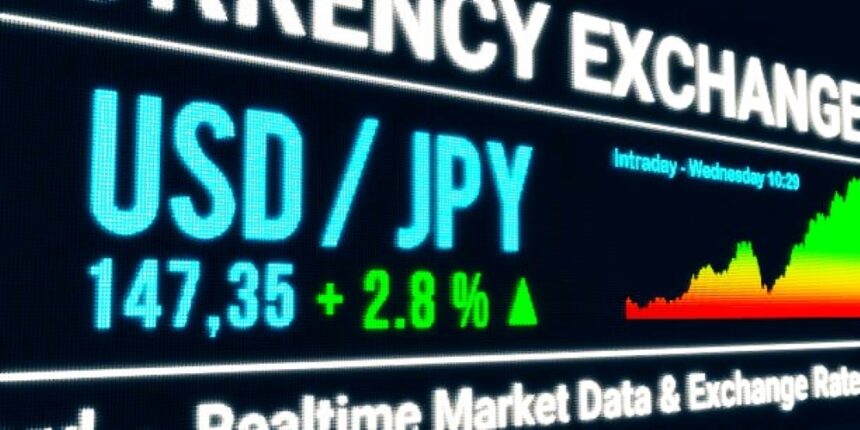The Japanese Yen (JPY) staged a modest recovery on Wednesday after reversing early weakness triggered by disappointing trade figures. Japan’s core Machinery Orders unexpectedly rose 3% in June, defying expectations of a 1% decline. The increase was largely driven by an 8.8% surge in non-manufacturing orders, offsetting an 8.1% slump in manufacturing orders.
However, optimism was overshadowed by trade data that painted a grim picture. Exports fell 2.6% year-on-year in July, marking the third consecutive monthly decline and the steepest fall in more than four years. Imports also contracted, down 7.5% YoY, though less than the expected 10.4% drop. This pushed the trade balance into a ¥117.5 billion deficit, missing expectations of a surplus and raising concerns about Japan’s fragile external sector.
BoJ’s Hawkish Stance Offers Japanese Yen Support
While weak trade data weighed on sentiment, the Japanese Yen found support from the Bank of Japan’s (BoJ) policy divergence with the Federal Reserve (Fed). At its July meeting, the BoJ revised its inflation forecasts higher and signaled readiness to raise interest rates again by year-end, provided inflation and growth stay on track.
This stands in contrast to expectations that the US Federal Reserve could resume rate cuts in September, with markets currently pricing in at least two 25 basis-point reductions before year-end. Such divergence favors the Yen, particularly as carry trade dynamics shift in favor of currencies with relatively tighter monetary stances.
Fed’s Cautious Approach Keeps USD Supported
The US Dollar (USD), however, remains underpinned by diminishing bets on aggressive Fed easing. Last week’s Producer Price Index (PPI) came in hotter than expected, rising at the fastest monthly pace since 2022. This reduced the likelihood of a jumbo September rate cut, tempering dovish bets and lending support to the USD.
That said, traders still lean toward a September cut, keeping USDJPY from making decisive gains. The Fed’s upcoming FOMC Minutes release and Chair Jerome Powell’s speech at Jackson Hole are expected to provide critical clarity on the Fed’s near-term policy outlook, likely dictating whether USDJPY continues consolidating or breaks into a new trend.
USDJPY Technical Picture
From a technical perspective, USDJPY has seen choppy price action in recent sessions as traders balance Fed uncertainty with BoJ hawkishness.
Immediate resistance lies near the 146.00 level, a psychological barrier that coincides with recent swing highs.
Support is seen around 144.20–144.50, where dip-buying interest has consistently emerged.
A break below 144.00 could expose the 143.30 region, while sustained strength above 146.50 would shift bias back in favor of the US Dollar.
Momentum indicators remain mixed, suggesting the pair is likely to stay range-bound until more decisive macro cues emerge.
Market Outlook: Focus on Fed-BoJ Divergence
The near-term outlook for the Yen rests on whether BoJ hawkishness can outweigh weak domestic fundamentals. While declining exports and a trade deficit highlight vulnerabilities in Japan’s economy, policy divergence with the Fed continues to provide a safety net for JPY bulls.
For now, investors appear cautious, unwilling to chase the US Dollar higher without clearer Fed guidance. If the Fed signals patience or pushes back against aggressive easing bets, USDJPY could drift higher. Conversely, dovish tones from Powell or the FOMC Minutes could reinforce Yen strength, particularly given the BoJ’s willingness to raise rates again.
Conclusion
The Japanese Yen’s resilience underscores the market’s focus on central bank divergence rather than weak domestic data. With the BoJ leaning hawkish and the Fed walking a fine line between inflation risks and easing expectations, USD/JPY is likely to remain volatile in the coming days. Traders will closely monitor the FOMC Minutes and Jackson Hole Symposium for direction, but the balance of risks suggests Yen strength could reassert itself if the Fed signals dovish intent.









